Until a few years ago we would have recommended a bike with 120mm of travel mainly for marathon races and Alpine crossings — but these days it’s a different story and the sleazy touring bikes have evolved to become nimble trail rigs. MERIDA’s ONE-TWENTY is the perfect example of this change.
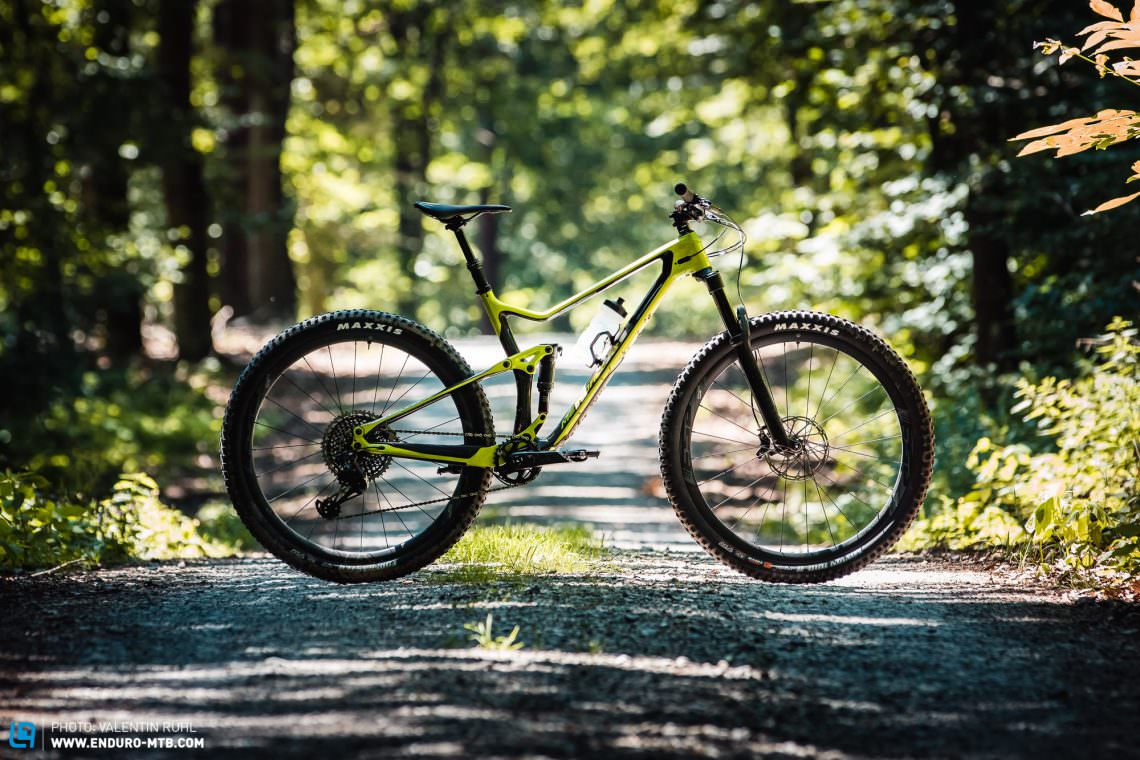
The MERIDA ONE-TWENTY in detail
As far as design goes the ONE-TWENTY is heavily based on MERIDA’s ONE-SIXTY but with a noticeably lower standover height — a solution that gives riders even more freedom of movement. MERIDA intentionally kept the decals discreet.

If you put the new ONE-TWENTY next to its predecessors you’ll notice a whole bunch of changes. The new frame is built around a Trunnion-mount shock which gave the engineers more freedom in frame design thanks to its low installation height. The new chainstay design should allow for a significantly stiffer rear-end which in combination with the larger bearings should also improve longevity. On top of that the new carbon frame is approx. 400 g lighter than the previous version of the ONE-TWENTY — including the through-axles and small bits the CF4 frame should weigh just over 2.4 kg in a size M. The aluminium frame of the more affordable models is now slightly heavier but also noticeably stiffer and more durable. Tire clearance has been increased so the new ONE-TWENTY can now take 2.35″ tires even on wide rims
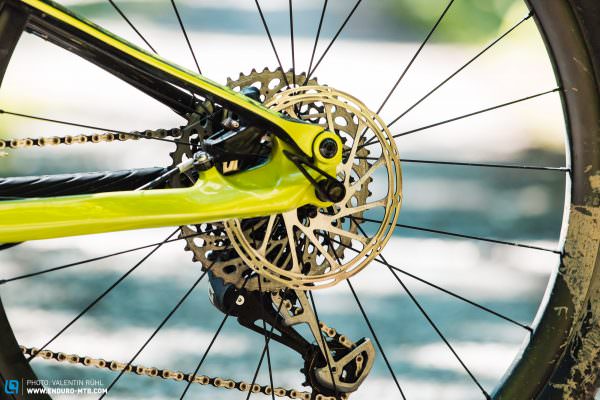

The high-end models feature a carbon frame and carbon swingarm and bear the CF4 suffix in their name. The CFA models on the other hand feature a carbon frame and aluminium swingarm whilst the LITE acronym designates all ONE-TWENTY aluminium models. All bikes feature an aluminium rocker — a carbon rocker would noticeably increase the production costs whilst saving only an irrelevant amount of weight. The CF4 version is only compatible with 1x drivetrains, the CFA and LITE models are designed to take a Low Direct Mount derailleur. Since it’s MERIDA’s objective to offer top performance even with their more affordable models all ONE-TWENTY frames include the same features. The main frame triangle can take a bottle holder. Since the mounting-points sit quite high in the frame we recommend using a side-entry bottle cage. From frame size M upwards you can use a 0.75 l bottle.
Geometry of the MERIDA ONE-TWENTY
By taking a quick look at the geometry chart you will understand what’s behind the concept and development of MERIDA’S new 29er trail bike. The seat tube is now 20 mm shorter and lowers the standover height as a result while allowing for more flexibility in the choice of frame size. At 67.3° the head angle has become significantly slacker compared to 69° angle on the previous model — but is still on the steep side. The seat angle, reach and stack have only changed minimally, the new ONE-TWENTY is now slightly longer and slacker. In the rear-end the 435 mm chainstays are now 10 mm shorter than before.
| Size | S | M | L | XL |
|---|---|---|---|---|
| Seattube | 400 mm | 440 mm | 480 mm | 520 mm |
| Toptube | 572 mm | 592 mm | 614 mm | 638 mm |
| Headtube | 95 mm | 95 mm | 105 mm | 115 mm |
| Headangle | 67,3° | 67,3° | 67,3° | 67,3° |
| Seatangle | 75,5° | 75,5° | 75,5° | 75,5° |
| Chainstays | 435 mm | 435 mm | 435 mm | 435 mm |
| BB Drop | 40 mm | 40 mm | 40 mm | 40 mm |
| Wheelbase | 1141 mm | 1161 mm | 1185 mm | 1208 mm |
| Reach | 415 mm | 435 mm | 455 mm | 475 mm |
| Stack | 607 mm | 607 mm | 616 mm | 626 mm |
The spec of the MERIDA ONE-TWENTY
Depending on the spec option the ONE-TWENTY can be used for either marathon style long distance riding or trail riding. We had the chance to test the high-end version of the trail line — the MERIDA ONE-TWENTY 9.8000 which costs € 6,799. In addition there is a long distance-oriented version with FOX factory suspension and a brand-new XTR 12-speed drivetrain: it’s called the 9.9000 and costs € 8,499. In Germany there will be three aluminium versions available with prices ranging from € 2,299 to € 2,899, other markets may have additional spec options. The ONE-TWENTY 9.800 with RockShox suspension and SRAM GX-Eagle group should be a particularly exciting option.
MERIDA ONE-TWENTY 9.8000
Fork RockShox Pike RCT3 130 mm
Shock RockShox Deluxe RT3 120 mm
Brakes SRAM Code RSC
Drivetrain SRAM X01 Eagle
Seatpost KS LEV Integra 150 mm
Wheels FSA Gradient LTD
Tires Maxxis Minion DHR II/Forekaster
Weight 12.57 kg
Price € 6,799
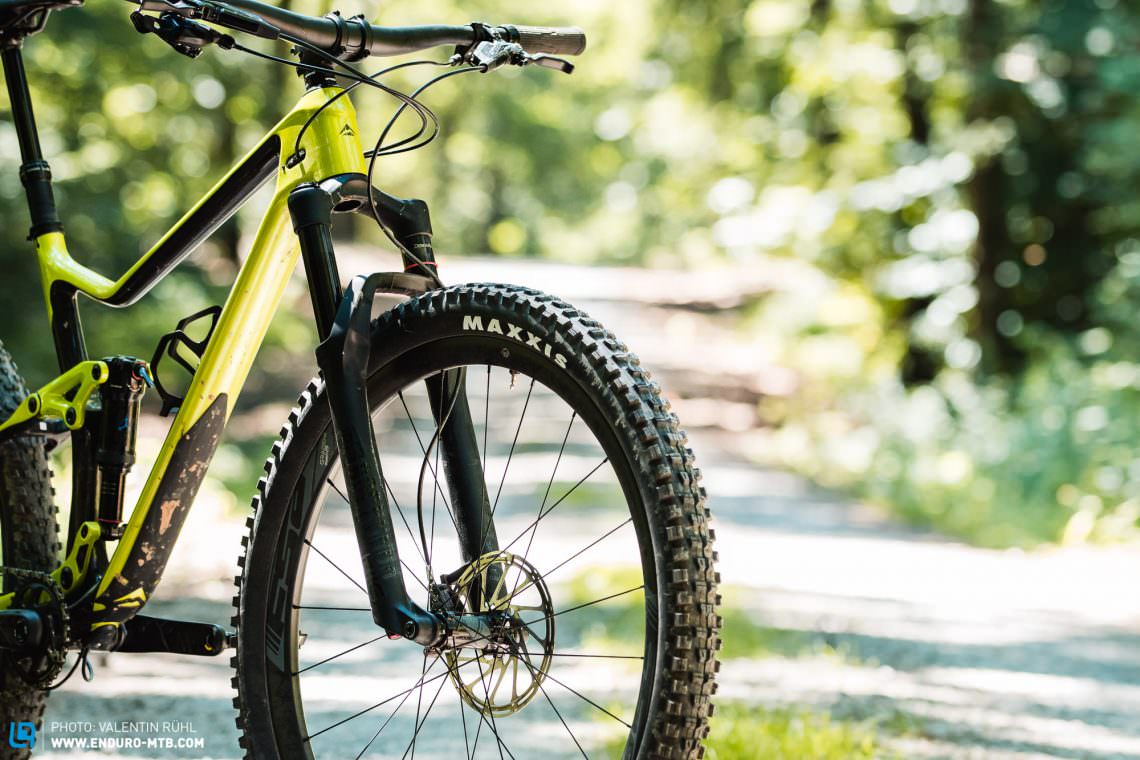


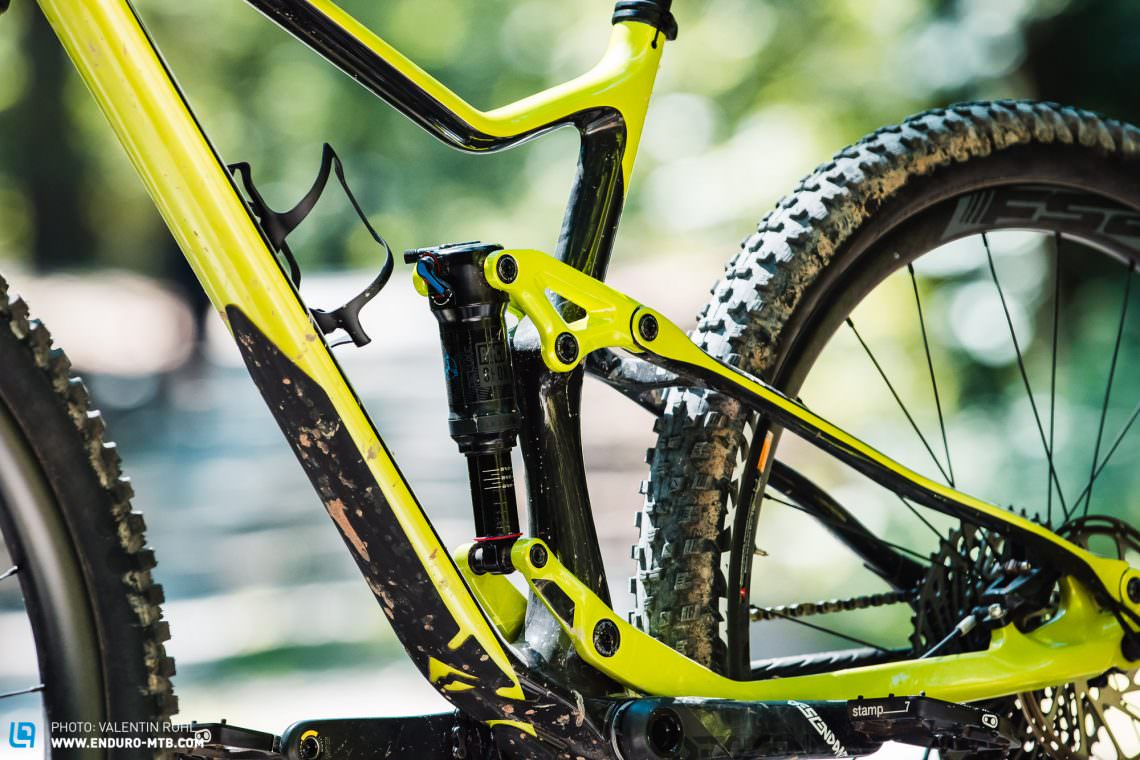
The MERIDA ONE-TWENTY on the trail
Straight away the MERIDA ONE-TWENTY feels surprisingly familiar. The riding position is pleasantly stretched but not too racy. Since the drive-neutral rear-end doesn’t bob whilst pedalling we never really bothered locking out the rear-shock. Despite the heavier trail-oriented spec on our test bike the weight remains contained at 12.57 kg. The lower weight supports the acceleration both on climbs and on the flats.
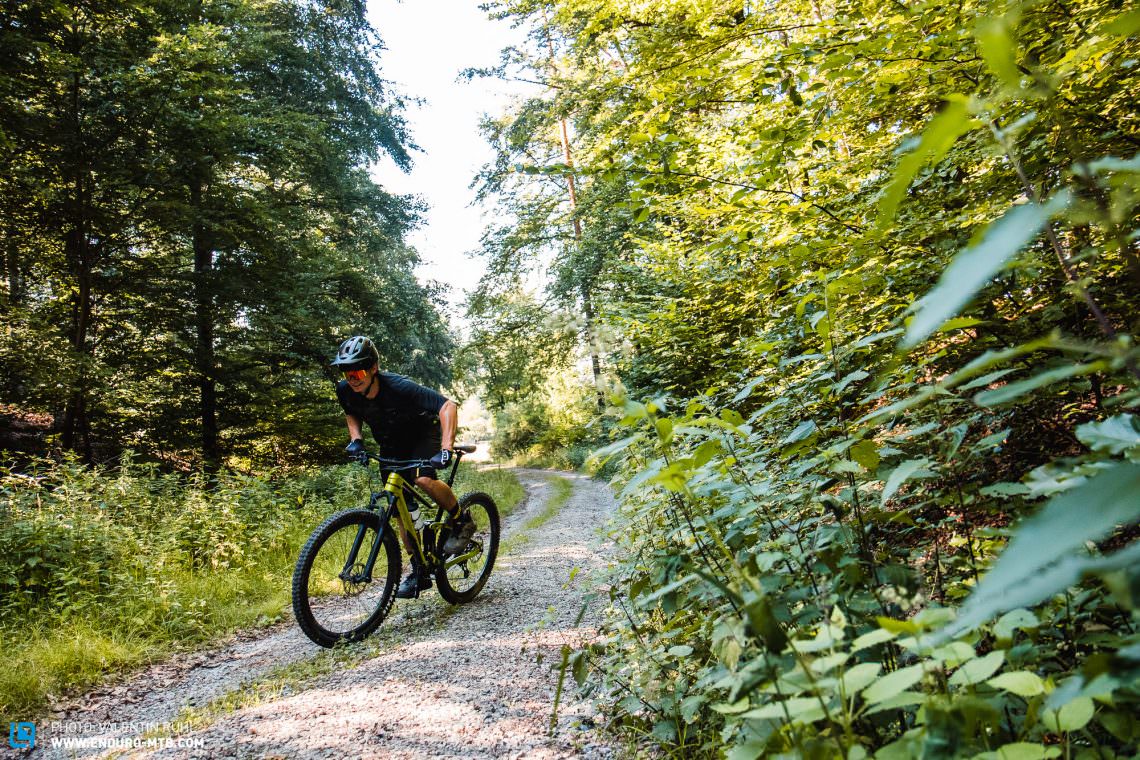
On even trails with lots of pedalling sections the ONE-TWENTY is a power house. Not only is it as fast as a bullet but it’s also shed loads of fun. The handling of the ONE-TWENTY is extremely lively and direct and literally inspires you to play around on trail sections you would normally roll out on a long-travel bike. Initially we set the SAG of the Merida at about 25% but soon realised that with a 30% SAG the rear-end feels way better while offering good support and without rushing through its travel. The moderate geometry contributes to the manoeuvrability of the bike and requires hardly any adaptation time.

When the trail becomes steeper and more challenging you need to be a little more alert — the ONE-TWENTY requires an active riding style and will reward good line choices with a precise and predictable handling. The suspension feels rather firm and gives you lots of feedback from the trail. The robust spec shows its perks on more demanding terrain and once again demonstrates that brakes and tires are often the true limiting factors on most short-travel trail bikes. The powerful SRAM Code RSC is usually seen on enduro or DH bikes but perfectly suits the character of the ONE-TWENTY — and fully convinced us with its good modulation. The grippy Maxxis Minion DHR II on the front inspires tons of confidence and gives the ONE-TWENTY the credentials to stand up against bikes with more travel.

Conclusion
MERIDA announces the ONE-TWENTY as an all-rounder for both long distance and trail riding — and they’re totally spot on. The new ONE-TWENTY is a true first-class trail bike which convinced us with its playful handling. If you’re not exclusively hitting demanding trails but also like spending long hours in the saddle you should definitely take a closer look at the MERIDA ONE-TWENTY.
More information soon at merida-bikes.com

Did you enjoy this article? If so, we would be stoked if you decide to support us with a monthly contribution. By becoming a supporter of ENDURO, you will help secure a sustainable future for high-quality mountain bike journalism. Click here to learn more.
Words: Photos: Valentin Rühl









